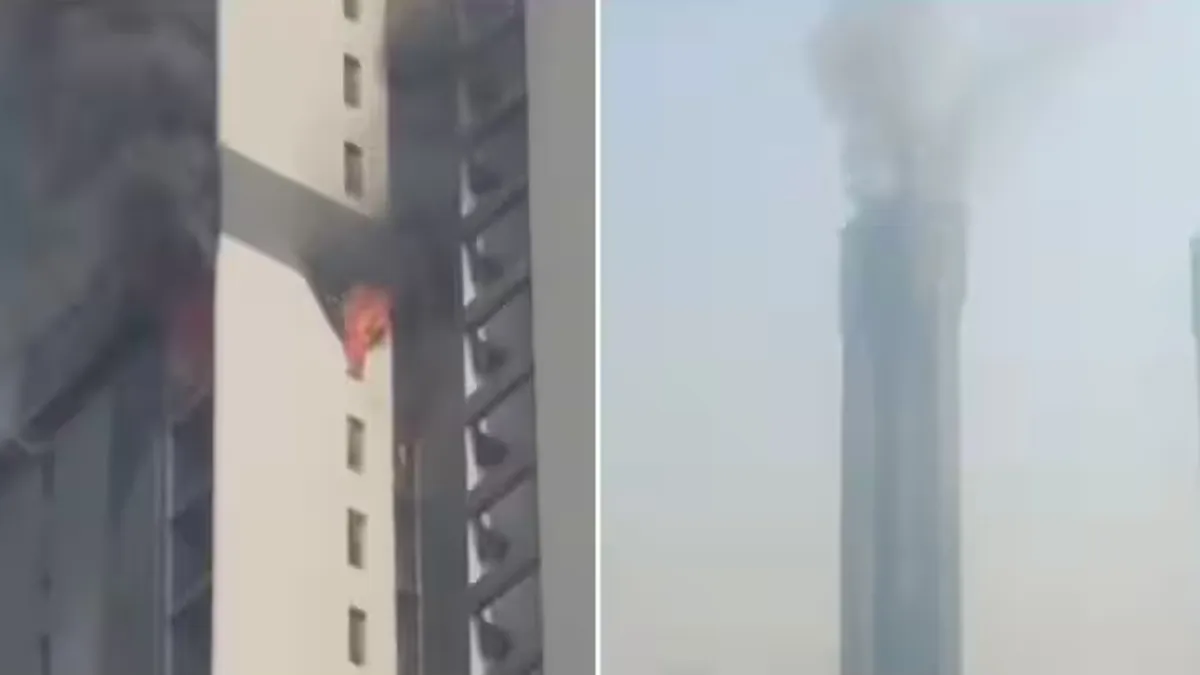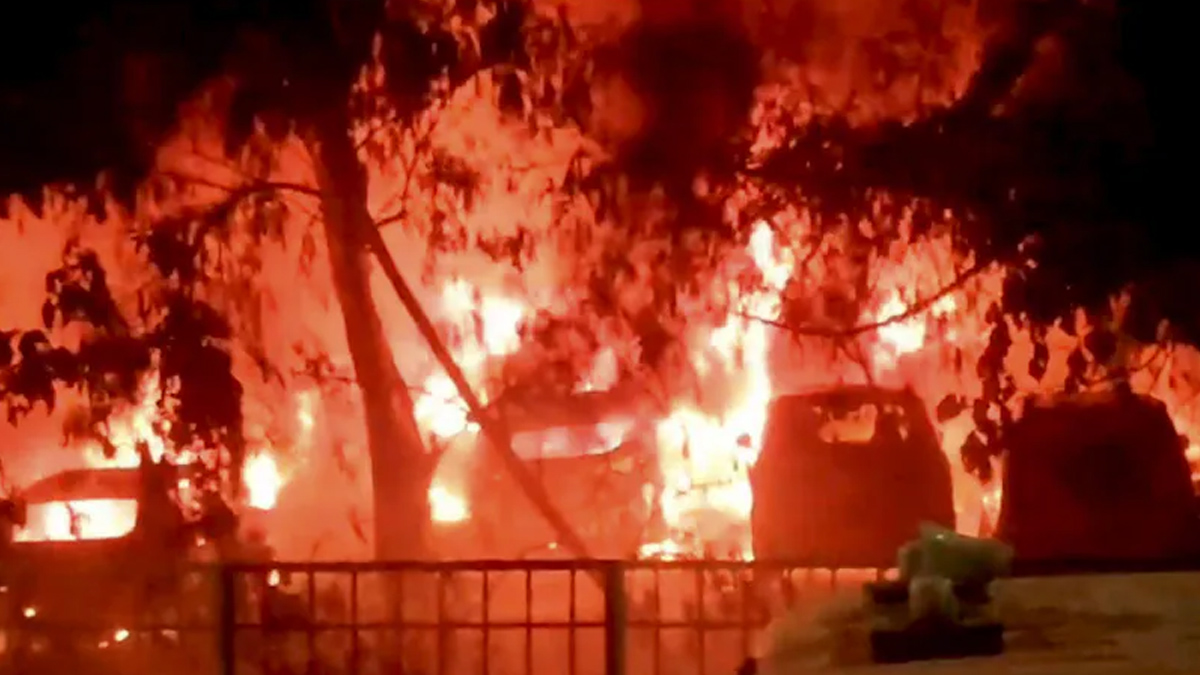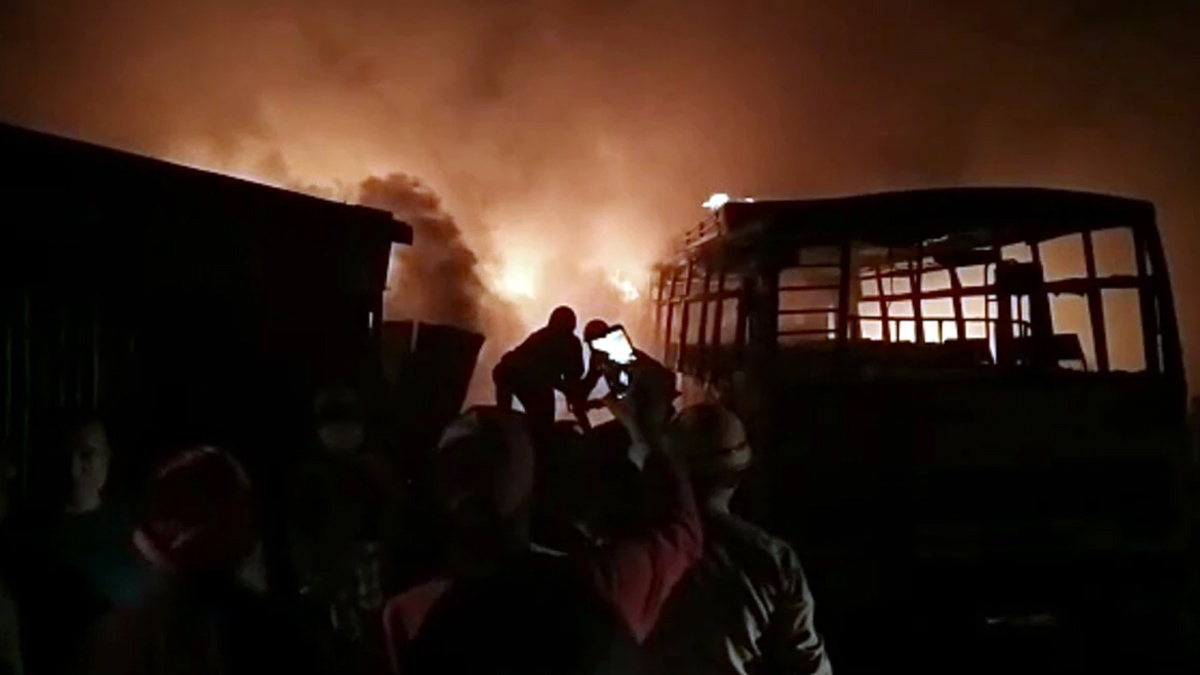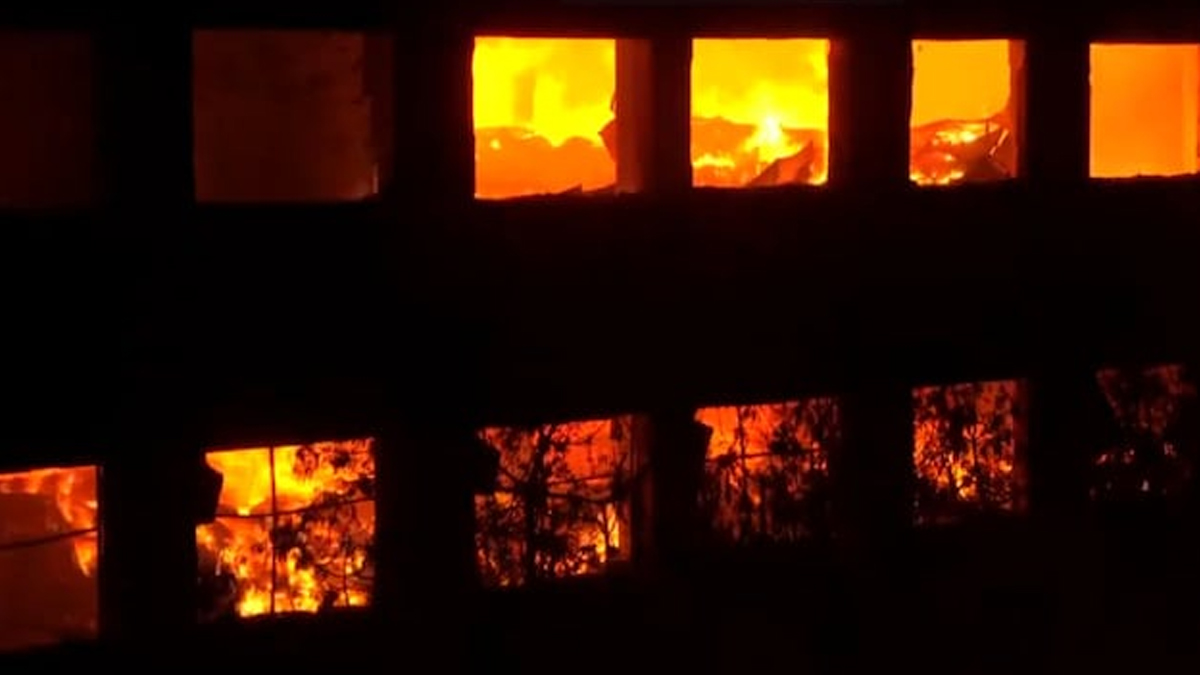
A massive fire broke out on Friday morning in a high-rise residential building in Mumbai’s Byculla area, sending thick plumes of smoke into the sky. The blaze, which erupted around 11 AM on the 42nd floor of the Salsette Building, prompted an urgent response from the Mumbai Fire Brigade (MFB). While emergency teams managed to contain the flames and evacuate all occupants safely, the incident has raised serious concerns about the health risks associated with inhaling fire smoke.
Table of Content:-

Swift Response Averts Major Tragedy
Firefighters quickly arrived at the scene and launched a large-scale operation to control the fire. According to officials, the electricity supply to the building was cut off to prevent further hazards, but the structure remained engulfed in thick smoke for hours. Thankfully, no casualties or injuries have been reported thus far. However, experts warn that prolonged exposure to smoke, even in seemingly minor incidents, can have lasting health consequences.
Also Read: Hina Khan Observes Ramadan Fasting Post-Cancer Recovery
How Fire Smoke Affects Health
Fire smoke is composed of a complex mix of gases and fine particles that can severely impact the respiratory system. The combustion of household materials releases hazardous substances, including carbon monoxide, formaldehyde, and fine particulate matter. When inhaled, these pollutants can trigger immediate and long-term health issues.

Immediate Effects of Smoke Inhalation
- Respiratory Distress: Smoke inhalation can cause intense coughing, wheezing, shortness of breath, and irritation of the throat and eyes.
- Carbon Monoxide Poisoning: Exposure to carbon monoxide, a colorless and odorless gas, can lead to dizziness, headaches, confusion, and, in severe cases, loss of consciousness.
- Burns to Airways: Superheated gases can burn the respiratory tract, leading to swelling, pain, and difficulty breathing.
Also Read: Deadly ‘Crying’ Disease Spreads Rapidly In Congo, Claims Lives Within Hours—Doctors Urge Vigilance
Long-Term Health Risks
Repeated or prolonged exposure to fire smoke can have serious health repercussions, including:
- Chronic Obstructive Pulmonary Disease (COPD): A condition characterized by permanent lung damage, leading to breathing difficulties.
- Asthma Exacerbation: Smoke inhalation can worsen pre-existing asthma, making attacks more frequent and severe.
- Increased Risk of Infections: Damaged lung tissue is more susceptible to infections such as pneumonia and bronchitis.
- Cardiovascular Effects: Fine particles in smoke can enter the bloodstream, increasing the risk of heart disease and stroke.

Who Is Most at Risk?
Certain groups of people are more vulnerable to the harmful effects of smoke inhalation, including:
- Children: Their developing lungs make them more susceptible to damage from airborne toxins.
- Elderly Individuals: Weakened immune systems and pre-existing health conditions put older adults at greater risk.
- People with Respiratory Conditions: Individuals with asthma, COPD, or other lung diseases can experience severe complications from smoke exposure.
- Smokers: Pre-existing lung damage from smoking can worsen the effects of smoke inhalation.
Precautionary Measures to Protect Against Fire Smoke
In the aftermath of a fire, taking necessary precautions can minimize health risks:
- Wear a Mask: N95 masks or other high-filtration masks can help reduce inhalation of fine particles.
- Stay Indoors If Possible: If smoke lingers in the air, staying indoors with windows closed can help reduce exposure.
- Use Air Purifiers: High-efficiency air purifiers can help filter out harmful particles from indoor air.
- Seek Medical Attention If Needed: Anyone experiencing symptoms of smoke inhalation should consult a healthcare provider immediately.
Bottomline
While the swift response from Mumbai’s fire brigade helped avert a major disaster in Byculla, the incident serves as a stark reminder of the dangers posed by fire smoke. Being aware of the health risks and taking necessary precautions can help mitigate the impact of such incidents, ensuring better respiratory health for all.
Also watch this video
How we keep this article up to date:
We work with experts and keep a close eye on the latest in health and wellness. Whenever there is a new research or helpful information, we update our articles with accurate and useful advice.
Current Version